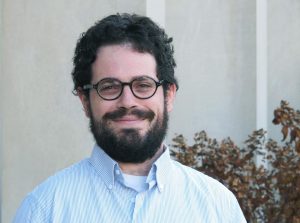Whistle a Happy Tune, by Philip Chang
The notion that music can influence our emotions is at least as old as Plato’s Republic. It’s an idea explored by many writers and thinkers in the centuries since.
How does this music make you feel?
Samuel Barber’s Adagio for Strings is particularly apt for the question because it is “absolute music,” bearing no illustrative title, descriptive program, or narrative lyrics. Without such cues, what induces our emotional response to the Adagio?
Music philosopher Peter Kivy proposes that characteristics in music shape an expression of emotion, and we respond accordingly. The music itself is not happy or sad, but is expressive of happiness or sadness. We recognize these elements from experience. We’ve witnessed displays of grief, joy, and anger, and likely had these feelings ourselves. We associate actions and internal sensations with them. If we detect something in music that reminds us of them, then our conventional emotional response might be recalled.
Consider tempo, which compares easily to our heartbeat. A slow tempo resembles a slow heartbeat. When our hearts beat slowly, we might be depressed and drained. Our breath comes in drawn-out sighs. Our faces droop, we plod listlessly, succumbing to the downward pull of the earth. Listen to this bass melody, first plain, then decorated, then finishing with a cadence.
Known as a lament bass, we can recognize in it gestures that simulate sighs, weighty steps, and and lethargy. These combine into a sense of sadness.
Here is part of a chaconne by Louis Couperin that features a lament bass. But this is cast in major mode.
Did your mood change because the mode changed? You can imagine the questions raised by similarly rich musical passages. They provoke theorists, philosophers, and cognitive scientists to continue investigating the mystery of emotion and music.
The title of Thomas Larson’s book about Barber’s Adagio is The Saddest Music Ever Written. What do you think is the happiest music ever written?
– Philip Chang
Couperin, Louis. Intégrale de l’œuvre de clavecin, Davitt Moroney, performer (Harmonia Mundi, 1989).
Emerson String Quartet. American Originals (Deutsche Grammophon, 1992).
Kivy, Peter. Sound Sentiment (Temple University Press, 1989).
Robinson, Jenefer. “The Expression and Arousal of Emotion in Music” (The Journal of Aesthetics and Art Criticism, Vol. 52/1, 1994).
HAPPENINGS: Alumni Spotlight and Faculty News
Alumni Spotlight
 Mitchell Ohriner (BM-composition, 2004) has recently joined the faculty of the Lamont School of Music at the University of Denver as a music theorist. After getting the theory bug in courses at CU with Professors Steven Bruns, Keith Waters, and Daphne Leong he earned graduate degrees in music theory at Indiana University and served on the faculty of Shenandoah University for five years. At DU he teaches second-year theory courses, an introductory non-major course on music, math and computation, a non-major advanced seminar on the psychology of music preference and genre, and graduate seminars on popular music analysis and music information retrieval.
Mitchell Ohriner (BM-composition, 2004) has recently joined the faculty of the Lamont School of Music at the University of Denver as a music theorist. After getting the theory bug in courses at CU with Professors Steven Bruns, Keith Waters, and Daphne Leong he earned graduate degrees in music theory at Indiana University and served on the faculty of Shenandoah University for five years. At DU he teaches second-year theory courses, an introductory non-major course on music, math and computation, a non-major advanced seminar on the psychology of music preference and genre, and graduate seminars on popular music analysis and music information retrieval.
His dissertation focused on expressive timing in performances of Chopin; his article on Chopin mazurkas in Music Theory Online received the Society for Music Theory’s Emerging Scholar Award in 2013. He is still engaged in this research and will have a chapter on expressive timing appear in The Oxford Handbook for Music Theory Concepts. But his recent work has turned to rhythm in rap music, especially the concept of flow, the rhythmic signature of the emcee. He is working on a book on this topic. In the meantime, his work on rap music can be seen in the most recent issue of Empirical Musicology Review. He invites former, current, or prospective theory students to get in touch at mohriner@gmail.com.
Faculty News
Daphne Leong continues to work in both theory and performance. She received a Kayden Research Grant for her book Performing Knowledge: Twentieth-Century Music in Analysis and Performance, slated to come out with Oxford University Press in 2018. She published an essay on ways of knowing related to analysis and performance in Music Theory Online, and has a chapter forthcoming on connecting those two domains through music theory pedagogy (Norton Guide to Teaching Music Theory). Her quartet Throw Down or Shut Up! is making a recording, funded in part by a GCAH grant. It gave two world premieres, of John Gunther’s setting of Maurice Sendak’s Where the Wild Things Are, and Hunter Ewen’s Cake of a 1000 Waterfalls, as part of its concerts on the Dairy Center Soundscape Series and the College of Music Faculty Tuesday Series. Leong also performed on the Eastman School of Music’s Faculty Artist Series and gave a colloquium for its theory department. Leong is in her second year as Vice President of the Society for Music Theory.
Philip Chang was recently appointed Reviews Editor of the Journal of Music Theory Pedagogy. In this position he helps keep the music theory community informed about new developments and resources related to the teaching of music theory.
Connections between music, words, and meaning inform much of Yonatan Malin’s research. He is currently working on an article on poetic syntax and musical flow in songs by Fanny Hensel, and he presented a paper in the fall at the University of Rochester on poetic endings and song endings in Schubert’s famous song cycle Winterreise (Winter’s Journey). He is also reading about the anthropology of art as he explores issues of aesthetics and culture in Jewish music.
Malin was thrilled to teach a graduate seminar on the music of Schubert for the first time last fall. Students produced a range of innovative projects for the seminar including song arrangements for solo bassoon, trombone quartet, and trombone with vibraphone and marimba. He continues to enjoy teaching core theory classes, and he is preparing to teach a new course on Music in Jewish Culture in the fall of 2017. This is his second year as the chair of the Composition and Theory Department.
Keith Waters will have his book, Postbop Jazz in the 1960s: The Compositions of Wayne Shorter, Herbie Hancock, and Chick Corea, published by Oxford University Press later this year. This will be his fifth book, and the second to be published by Oxford. His article on Chick Corea appeared last fall in Music Theory Spectrum. He also edited a posthumous companion article by his former collaborator Steve Strunk. As of this writing, the journal’s website shows both articles to be the most widely downloaded among articles published by Music Theory Spectrum. He published a co-authored article in the Journal of Jazz Studies last fall. Last May he performed as guest soloist with the big band of the Catholic University of Peru in Lima, and he will be performing while on sabbatical in Germany this spring.
Steven Bruns wrote liner notes for a recording by Scottish pianist Steven Osborne. The CD includes solo piano works by Morton Feldman and George Crumb and was released by Hyperion Records in 2016 (Hyperion CDA 68108). The disc is one of three finalists for BBC Music Magazine’s 2017 Awards (Instrumental category): http://awards.classical-music.com.
On May 7, Bruns will attend the world premiere of George Crumb’s newest composition, Metamorphoses for solo piano, performed by Margaret Leng Tan, for whom the piece was created. The ten movements are musical responses to paintings by Klee, Chagall, van Gogh, Gauguin, Whistler, Dalí, Kandinsky, and Jasper Johns. Fittingly, the premiere takes place at the National Gallery of Art in Washington. In early June, Tan presents the European premiere at the Holland Arts Festival. Bruns will join Ms. Tan and music critic Kyle Gann in discussing Crumb’s music in a symposium at the University of Amsterdam on June 10.
UPCOMING EVENTS
Colloquia (academic presentations)
Mondays, 2:00 pm, refreshments following
Imig Music Building, C-199 (Chamber Hall)
Those who enjoyed Steven Bruns’s CU on the Weekend presentation in November, on Crumb’s Apparition, may also enjoy the following presentation, by two DMA students.
March 6, 2-3 pm – Zachary Patten and Michiko Theurer, University of Colorado Boulder
“Perspectives on the Music of George Crumb”
Zachary Patten, a DMA composition student, presents a multi-media analysis of Crumb’s largest work, Star-Child, for soprano and trombone soloists, choruses, and multiple orchestras. Michiko Theurer, a DMA violin candidate, discusses one of the composer’s most intimate and enigmatic works, Four Nocturnes (Night Music II) for Violin and Piano, composed in 1964, when Crumb was on the faculty at CU Boulder. Both of these analyses stem from research begun while participating in Bruns’s doctoral seminar on Crumb during the Fall 2016 semester.
March 20, 2-3:30 pm – Brian Alegant, Oberlin College Conservatory of Music
“Re-attacking Two Brahms Puzzles: Analyzing and Performing Brahms’ Op. 116, 4 and 6”
Abstract
This presentation explores the analysis and performance of Brahms’ op. 116, 4 and 6. These movements in E major are noted for their formal and harmonic ambiguity, and they present considerable challenges to analysts and performers alike. I will summarize the received wisdom on these movements (building on essays by E.T. Cone and Jonathan Dunsby); trace the history of several chromatic motifs and agents; examine the implications of Schenker’s notion of an obligatory register; and demonstrate an interpretation or take.
Bio
Brian Alegant is Barker Professor of Music Theory at Oberlin College Conservatory of Music. His research interests include performance and analysis, pedagogy, and twelve-tone music. He has received fellowships from the National Endowment for the Humanities (1999-00), the Social Sciences and Humanities Research Council (1993-96), and the Mellon Foundation (2003), and has published on a wide range of topics in Music Theory Spectrum, Journal of Music Theory, Perspectives of New Music, Music Analysis, Journal of Music Theory Pedagogy, Intégral, and Nineteenth-Century Music Review. His book on the twelve-tone music of Luigi Dallapiccola was published by the University of Rochester Press.
In 2015, Alegant was the first music professor to be named U.S. Professor of the Year by the Carnegie Endowment for the Advancement of Teaching and the Council for the Advancement and Support of Education. He was also recipient of a 2006 Northeast Ohio Council on Higher Education Award for Teaching Excellence.
Alegant is a former editor of Music Theory Spectrum and former executive board member of the Society for Music Theory. He earned a PhD in music theory from the Eastman School of Music, master’s degrees in music theory and music history from Temple University, and a BM in piano performance from the Philadelphia College of the Performing Arts.
ABOUT THE MUSIC THEORY DEPARTMENT AT THE UNIVERSITY OF COLORADO BOULDER
Our faculty are Mark Arnett, Steven Bruns, Karin Buer, Philip Chang, Daphne Leong, Yonatan Malin (chair), and Keith Waters.
Visit the department home page for more information.
Header image by Pixabay (CC0).
